Once you have learned the basic techniques for communicate on social networks, we are likely to find ourselves facing another problem. That of not being able to apply his ideas within a rigid organization which does not (yet) allow innovation by trial and error.
In fact, it is necessary to have revolutionized the internal structure of the company, and to provide it with an internal culture allowing it to really try out social networks. This goes through various stages, which I will try to list for you here.
Note: This chapter is the 8th in a series of course on Social Media, the summary of which can be found here, as well as of an Introduction to Management 2.0 course, the summary of which can be found here.
Paradigm: tools for personal use have revolutionized the professional world
The starting point of the reflection (which has since been overused, we will come back to it) is the following: recognize that unlike a time when the computer or messaging were first invented by and for scientific or professional organizations before 'be implemented in individuals, today many tools that revolutionized businesses were first created for individuals. This subtlety must be understood by top management when we want to digitalize an organization.

Facebook is the most obvious example. Social networks focused on entertainment have for example inspired business social networks.
Personal Twitter accounts and Facebook profiles have pushed companies to create professional profiles for external communication.
Therefore, the company must carry out monitoring what is emerging in terms of personal uses. This starting point leads to another reflection: that of recognizing that innovation can come from nowhere, without necessarily having been ordered or financed.
Second postulate: not evolving is disappearing
New markets, new technologies, new challenges… many reasons push companies to evolve, whether through successive layers or through real revolutions. Not accepting the idea of change, or being afraid of it for reasons of stability, it is to be led to decrease, sooner or later.
There is more than one obstacle that can push us not to begin a process of change. We must convince employees, decision-makers, customers, shareholders, stakeholders, public authorities, etc. In short, everything is done to discourage us from evolving, especially since change requires a cost that is energy-intensive, it is not necessarily something intuitive, especially when this change is initiated programmatically and not linked to survival. But the price to pay, represented by the effort to be made, can have unexpected benefits in terms of growth, profits, and efficiency.
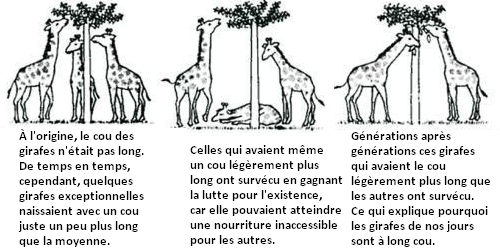
We will therefore start from the postulate that an organization that wishes to implement a Social Media strategy and communicating on social networks is a business who must agree to innovate.
Be careful however, you must not simply innovate for the sake of innovation, but meet a defined objective (competitiveness, modernization, growth, conquering a new target, etc.). Innovation must respond to a defined strategy, just as it pushes us to define new strategies!
“It is not the strongest of the species that survives, nor the most intelligent that survives. It is the one that is the most adaptable to change. »
The external battle is first won internally
Become a social and digital brand does not just happen through stupid and mean communication on social platforms. The process must integrate a real (r)evolution in structure and culture internal of the company so that the magic takes place.
There digitalization of points of sale or the customer relationship first go through an internal audit of the company culture and its structure, in order to find out if the organization can support digitalization. Because for it to be able to support projects, it must have integrated the interest of digital and to have taken a liking to it. Let us first look at the theoretical path that a typically hierarchical company should follow to adapt its organization to current managerial methods.
From a mechanistic bureaucracy to a Mintzberg-style adhocracy
Henry Mintzberg, born in 1939, engineer by training, is a professor at McGill University in Montreal. He is the main representative of the school of contingency, which is a current attached to the organization theory.
The contingency school attempts to explain the influence that variables linked to the environment have on the organization. The structure of the organization would therefore depend on the nature of the environment. Furthermore, Henri Mintzberg explains that the organization also results from goals that leaders set for themselves. In other words, in the contingency school, the organization is the product of external and internal forces.
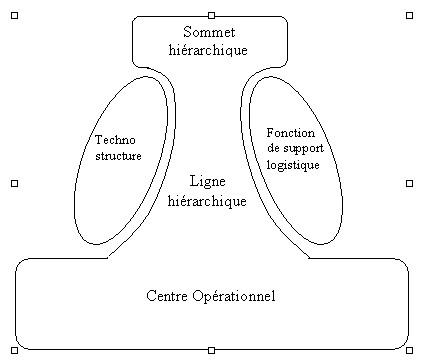
The first step in leading change is recognizing that it is necessary debureaucratize the organization. Whether it is mechanistic or professional, the idea is to admit that it must tend towards an adhocracy structure.
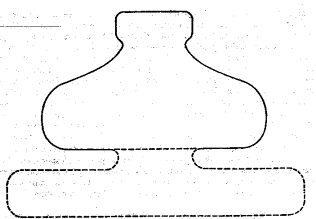
The adhocracy structure (ad hoc, responding to a need) is similar, according to Wikipedia, to an organization “which mobilizes, in a context of unstable and complex environments, multidisciplinary and transversal skills, to carry out specific missions (search for efficiency, launch of a new product, etc.)”.
According to Mintzberg, these are its specific characteristics:
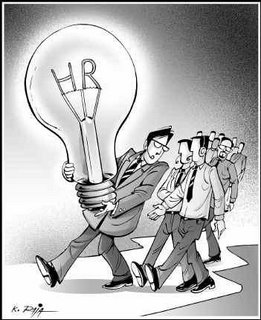
- specialization of horizontal tasks based on solid training on the part of the actors (experts, etc.);
- a tendency to group professionals into functional units to achieve set objectives;
- a tendency to disperse them into small teams to carry out their project (project management);
- mutual adjustment is the key coordination mechanism, within and between teams.
In other words, power is based on expertise, it is characterized by intrapreneur leadership, but is decentralized for the benefit of an organic and matrix organization, in a context of innovation and very environment changing.
In this structure, information and decision-making processes flow flexibly and informally to promote innovation.
This type of structure is therefore directly opposed to traditional organizations, marked by a very vertical hierarchical line. Furthermore, adhocracy stands out through mutual adjustment, which brings us to the next point.
From a school of planning to a school of learning
Unlike the school of planning, which involves the implementation by top management of a strategy resulting from a controlled, conscious, formalized and detailed process followed by controlled application, the school of learning defends the idea that the world is too complex and uncertain so that the strategy can be developed in a standardized manner (diagnosis, prescription, then implementation).
On the contrary, the decision-making process results according to this school an incremental approach, which distinguishes between the planned strategy and the strategy actually implemented.
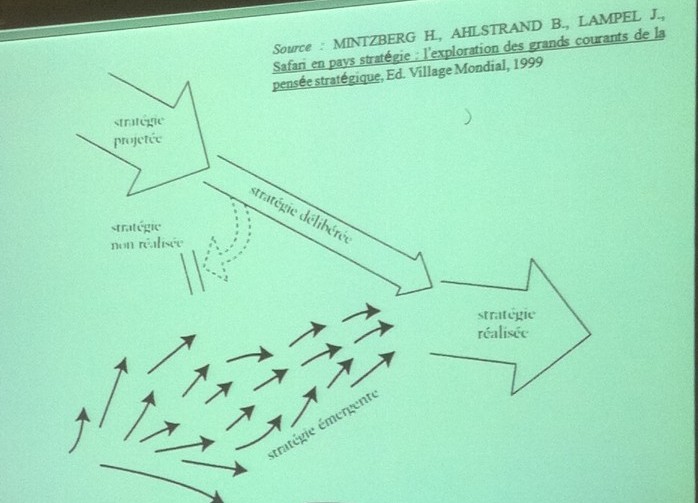
- The strategy implemented is the one that we see a posteriori, and which is the result of the projected strategy and the emerging strategy.
- Emergent strategy is an unplanned strategy which is the result of the actual behavior of the actors and the unexpected. Moreover, part of the planned strategy has not been implemented.
- Finally, deliberate strategy is the result of control, which verifies that the planned strategy is well implemented.
According to this school, we therefore have a strategy which is partly the fruit of the emergent and the incremental : it’s learning. The strategy is therefore built step by step, as internal decisions and external events are added.
It is a school that takes into account the subjectivity and the interactions inter-individual within companies. In short, a company flexible, oriented 2.0. Which logically brings us to collaboration.
From employees to collaboration
Improving your 2.0 performance while refusing to accept 2.0 within your organization may seem risky. This is why, once the idea of shift from an organization based on the design or planning school to something more incremental, we still have to see how we put this into practice. Namely: break the vertical hierarchical link to switch to something more horizontal, while maintaining control.
Formerly marked by obedience and the vertical hierarchy, management tends to move towards a form of transversal collaboration where the desired value is the added value, skill, talent and expertise, preferentially over presenteeism, seniority or network. We are moving towards the obligation of results, to the detriment of the obligation of means.
From then on, the employee is encouraged to take initiatives, manage their tasks, demonstrate autonomy and take responsibility.
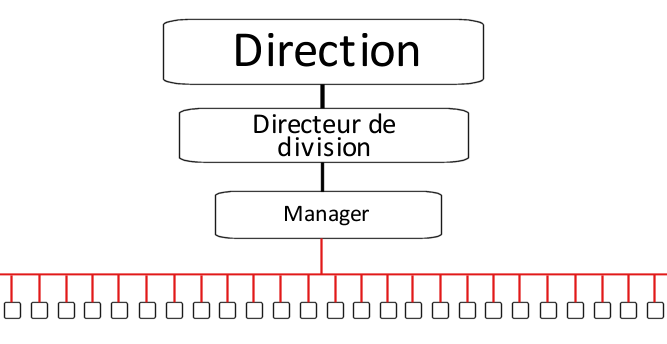
The two major advantages of this type of organization are the following:
– Innovation can come from anywhere. The hierarchy should NOT block creativity, but rather process all ideas that come back to them.
– Clusters and working groups make it possible to create a collective and shared intelligence (which brings us to cloud computing and synchronization of stored data).
Collaboration supported by a 2.0 corporate culture
It's no longer a secret for anyone, the corporate culture is a strategic asset for the company, a growth factor and an influence on organizational behavior.
Defined by Renaud Sainsaulieu (identity at work, 1977) as “the reservoir internalized, transmitted and carefully elaborated by history of a set of values, rules and collective representations which function at the deepest level of human relationships”, corporate culture can constitute a performance lever by allowing for example a informal management style which encourages taking initiative and proximity.
She can also boost motivation employees, who find a meaning in their work as part of a Collective action. It brings individuals together as a community, sometimes taking initiative, sometimes defensive if necessary.
All sprinkled with a zest of entrepreneurial vision
The entrepreneurial school (Schumpeter, Collins and Moore, Bennis) emphasizes the importance of intuition, experience and insight of the entrepreneur. Her " vision » is an unquantifiable strategic value, and he centralizes a large part of the power in his person. Steve Jobs is a leading example of this model.
In the absence of a Steve Jobs, in this demonstration we will simply suggest the contribution of an intrapreneur or an innovation lab within the organization.
The entrepreneurial school goes against heavy organizations where decisions must be approved (or not) by all parties and which result from a hubbub of interests. In terms of innovation and change, it certainly presents risks, but has the merit of making in-depth changes, under the aegis of a charismatic manager.
In practice: what are the means to achieve this type of flexible organization?
Human resources adapted to the new economy
Obviously, recruitment does not happen all at once. But in the case of replacements for example, it is a question of paying particular attention to the candidates' attraction to collaborative tools, new media, and open-mindedness on these subjects.
Competent developers, the crux of the matter
In today's digital economy, code is king. And with the aim of flexibility, it is hard to imagine an organization seeking incremental innovation continuing to work with subcontractors, off-shore, or young self-employed people.
Developers embedded in companies enable incremental, mutual, interactive, dynamic and continuous change.
You need a real recruitment strategy that takes into account development needs (and why not an API, if that could be an asset for your business).
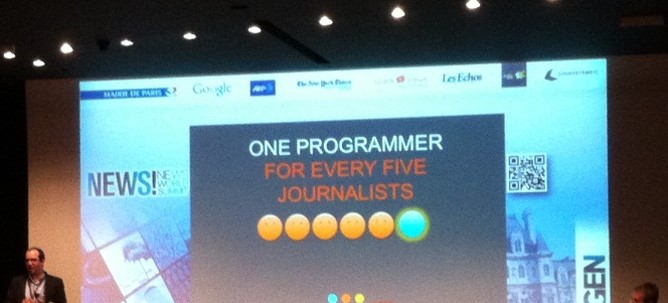
Monitors and content creators
In today's digital economy, content is king. And for various reasons. Starting with the SEO and SMO issues, which can allow you to position yourself in the maze of available information. But also for reasons linked to what is the essence of the Internet: sharing. The more you share (on your institutional blog for example, but also on social networks), the more you will earn in return.
The first example that I could cite is that of France Télévisions, whose strategy at the very beginning of this digital transformation in the 2010s consisted of embracing the codes of the web, while locking the system as little as possible. So, the best parts of the show We are not in bed ended up on YouTube, racking up millions of views, and literally making buzzer the program to an audience who were not necessarily watching France 2 at that time.
France TV's strategy was also summarized by its initiator in these terms during a speech at the GEN News Summit 2012:
- Do not lock the system
- Be everywhere
- Constantly adjust
- Don't be afraid of social networks
The other example is that of Gary Vaynerchuk, who made his fortune by turning his father's liquor store into an online wine sales website. Part of his success is linked to the media coverage received by his daily wine tasting columns which he broadcast as a podcast on his video blog. Wine Library TV. Author of “ How to Tell Your Story in a Noisy Social World », he himself defended at the conference LeWeb 2013 the model of give : “give before you sell”.
Consequently, the presence on your market through the creation and sharing of content (corporate announcements, signals sent to the market, innovations in your field, opinions on this or that product linked to your activity, relay of relevant information, etc.) is one of the ways for the organization to digitalize from the inside, for the inside.
A demonstrated desire from top management
No matter how much we praise the merits of a horizontal organization, there is no direction without a captain. Consequently, no digitalization can be done without the prior buy-in and full support of management. This presupposes that top management is already trained in collaborative tools, or that they need to be trained. The result must be the same: company leaders must set an example and support internal digital projects.
Lead by example, but how? By communicating, for example, on Twitter, to proudly represent your company, send signals to the market, and “play the digital game”.
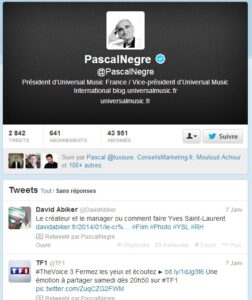
How to support projects? By sending emails to remind people of the interest in this or that project, and by listening to the concerns of each employee regarding this or that transformation. Which brings me to my next point.
Training and seminars
No one can bring about change through the operation of the holy spirit. Digitalization should not be an idealistic task imposed on employees.
“No one likes armed missionaries,” said Robespierre.
Therefore, it is a question of informing and raising awareness among managers and operational staff of the benefits of digitalization. By explaining to them the indispensable nature, guarantor of the survival of the company, in the face of the contingent. But also by showing them the opportunities and the pleasure that can be gained from them. Then by listening to their fears on the subject.
This involves costly but necessary seminars, to avoid resistance to change, and by providing the tools necessary for learning new practices (tablets for salespeople who sell a digital product, for example).
Setting up a corporate social network

Nothing better to encourage exchange, collaboration, and to create a common database, a “story” of your data. From then on, and on the basis of the feeling of “self-esteem”, the retention of information will be minimized in favor of common knowledge. It will be much easier to find a process or an old contract rather than asking this or that employee if they have stored it somewhere.
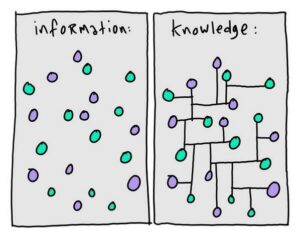
The creation of a “Lab”
An extension of the ideas box, the Lab is an allocation of human and financial resources, defined in advance, and which will attempt to implement innovative projects while respecting the adopted budget. Out of 10 projects, perhaps only one will be successful. But this success will perhaps be a new strategic asset for the company, or its new flagship product!
The risks
This digitalization is not without risks, and it presents certain pitfalls which I will describe below.
The cult of cargo
Definition of Cargo Cult
Already developed on this blog, the cult of cargo is defined as ineffective imitation of one's neighbor. Originally, the Cargo Cult is a set of Aboriginal rites which appeared in reaction to colonization. One of these rites consisted of imitating American and Japanese radio operators ordering supplies in the hope of achieving the same effects.
Totally unaware of the entire production process which preceded the delivery of food, the natives noticed that the radio operators of the ground troops obtained the arrival of ships or the airdrop of food and medicine simply by requesting them in their radio transmitter.
This observation led the aborigines to imitate the process by constructing, as best they could, false radio operator's cabins - with fictitious stations - in which they also requested - through false microphones - the sending of food, medicines and other equipment that they might need. They will even go so far as to build fake landing strips while waiting for planes to come and unload their cargo.
This then leads us to the following question: are we not sometimes led to apply methods by mimicry, without real reflection on the merits of our approaches?
The cargo cult can thus explain certain mimetic behaviors in IT (copying and pasting source code without adapting it), in market finance (financial bubbles), and of course in Social Media.
The cult of cargo in Social Media
In the digitalization of the organization, the cult of Cargo is similar to the Panurge effect, where we make headlong choices without doing any real in-depth work and analysis. So certainly, we've spent some time here extolling the virtues of incremental innovation. However, the trap is to get caught up in all the new things who are willing to scatter and become mediocre at everything.
Thus, we have seen media selling QR code campaigns which never worked, but which were hidden behind the argument that this type of device sent the market proof that the brand was digital and innovative. However, by selling devices that do not sell, the backlash risks being hard to absorb in the medium term.
Likewise, allocating resources and money on new social networks that are of little relevance to certain brands is a waste of time, money and credibility. The current example of Snapchat is glaring: all brands are tearing their hair out over how to take advantage of the success of this application, rather than asking themselves whether it is really relevant to try to link their brand to a messaging service. messaging…
How to overcome the pitfalls of ineffective imitation?
- Prioritize innovation management
- Learn to imitate: which amounts to understanding the ingredients that led to the success of the person you are imitating. Imitating behavior without understanding the structural and organizational reasons that allowed the brand to achieve success, and without taking over the competitor's value chain, amounts to doing what the aborigines do with radio operators.
- Strengthen the strategy by doing economic intelligence: the idea is to capture white (70%) and gray (25%) information.
- Balancing imitation and innovation: a classic case ofimitation-innovation is Apple's iPad, inspired by tablets that have already existed for several years but which had not aroused any enthusiasm. To understand the success of the iPad, we must integrate ingredients that only Apple could boast of having: cutting-edge R&D, high-end marketing, a star and autocratic leader (see the theory of the entrepreneurial school) , highly committed consumer ambassadors, a post-iPhone period conducive to the success of a tablet, etc…
Overestimate the contribution of social networks and digital
The search for ROI at all costs and in the short term is one of the cognitive biases likely to slow down digital innovation in your organization. Indeed, Return on Investment as a constraint imposes a short-term vision of the company's strategy. The short term may constitute a facet of the overall strategy, far from it, but it is common knowledge that it is preferable to free yourself from it when you want to implement projects with a digital scope, mainly for two reasons:
- The first is that innovation through incrementality presupposes testing, therefore failure, and the unforeseen. This leaves little room for choices based on economic projection alone, in an innovative and uncertain context. It therefore implies an allocation – obviously limited and controlled – of financial and human resources of which we know in advance that it is difficult to know which innovative project will emerge as the winner. Out of 10 projects, only a few will be likely to create value (and reimburse the failures of others). Imposing an ROI on your innovation lab is therefore unnatural.
- The second reason is that digital sometimes requires a long-term vision, and often a permanent questioning of its business model. Better than a thousand words, decline of Kodak speaks for itself. By inventing digital but by slowing down its advent because it saw it as a threat to its short-term profitability generated by film, the brand left the market to other competitors who were responsible for propelling film into the vintage camera category.
In simple terms, the search for ROI at all costs literally limits digital innovation.
Conclusion: the duty to innovate, even when everything is going well
A 2.0-oriented structure is a structure capable of responding to digital challenges, both in terms of performance, creativity, innovation and customer satisfaction.
A 2.0 oriented culture is one of the key success factors allowing us to achieve a flexible and 2.0 oriented organization, and it is incidentally a significant advantage in terms of employer branding, allowing the company to attract “digital” profiles from Generation Y.
“The biggest risk is not taking any. »
Risk taking – obviously controlled, budgeted and limited – constitutes in the worst case a provision, in the best case long-term survival. From then on, the choice is quickly made.
One of the best-known examples of risk-taking is that of Facebook with its recurring presentation changes which put the social network back at the center of its users' concerns and which do not give them time to get tired of using the service:
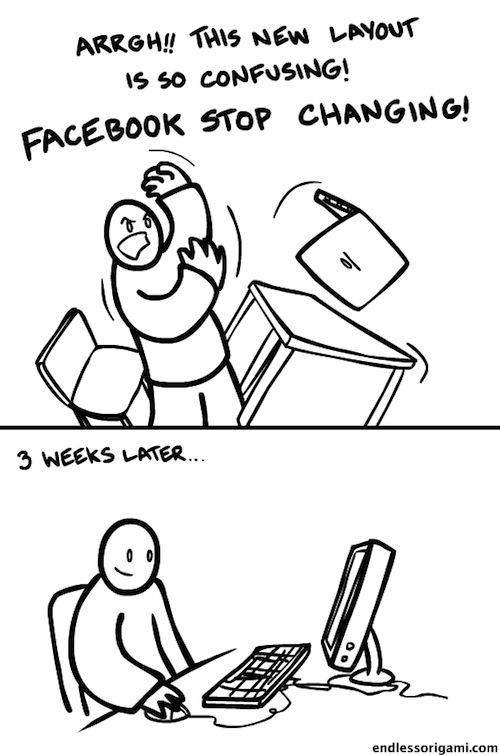
But we could also cite the questioning by Aimé Jacquet of the composition of the national selection in 1996, with the banning of the executives of the French team (Cantona, Ginola) in favor of a younger team (Zidane) based on collective play. At the time this change in strategy was a surprise to analysts. But we know the rest of the story.
Finally, another striking example is that of François Mitterrand who, against all polls, claims to be against the death penalty. This risky positioning will help him gain votes in public opinion, which sees him as a candidate who has a vision and who does not position himself according to the polls.
A position that is clearly linked to the entrepreneurial school (vision of the chef) and which aims to be anti-planning and anti short-term ROI. A positioning which, again, will bode well for him.
Innovation through the confrontation of ideas
There is not one solution, one answer to innovative questions. Innovation is by solution the empirical fruit of adjustments and tests on the part of market players. The fable of the elephant illustrates very well this confrontation of ideas which advances the schmilblick.
Blind scientists seek to complete their knowledge and discover what an elephant is through touch.
“One grabs his leg and concludes that it is a tree. The second one grabs his tail and thinks it's a whip. The third touches the elephant's trunk and says it is a pipe, and the fourth taps its side and says it is a wall, etc.
The wise man said to them: “You are all right. »
This metaphor can describe the evolution of the web, where everyone thinks they are right according to their experience, where everyone gropes forward, in sometimes contradictory trajectories. In the end, despite differences of opinion, everyone is right and everyone is building the web of tomorrow through empiricism, permanent and incremental adjustment, analysis and debate.
Which leads us to conclude that adaptation to the upheaval caused by Information and Communication Technologies (sometimes perceived as a threat) is achieved through innovation, the confrontation of ideas and empiricism.
It is therefore a question for the company of view social media as an opportunity (to communicate with our customers, to make certain people our ambassadors, to relieve after-sales service congestion, to provide a current and modern image, etc.), to be reactive, to constantly test and adjust.
Chapter 9 (Social Media): On the navel-gazing of social networks »
Chapter 9 (Management 2.0): Mitigating agency effects in digital outsourcing »
« Chapter 7 (Social Media): Tips and best practices for Instagram
« Chapter 7 (Management 2.0): The corporate social network deciphered in 10 points
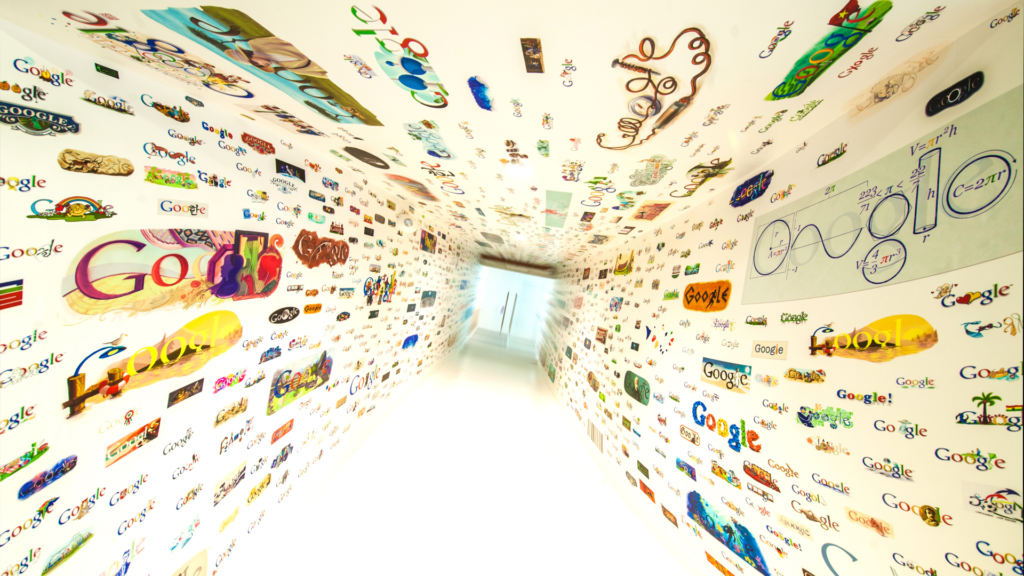
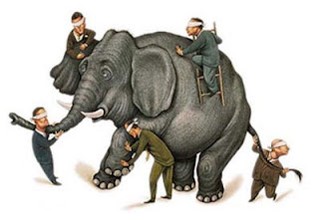
3 Responses
I admit that it has been a long time since I appreciated a reading of this level!!!
Thank you very much for this very interesting article!
I support operational staff in the digital transformation of their profession, I work in a very intuitive and common sense way, and I find in your article the pillars of my interventions.
Yours, Juliet
Excellent article
of the fund, of the perspective, of the questioning Bravo